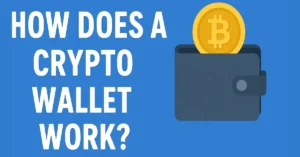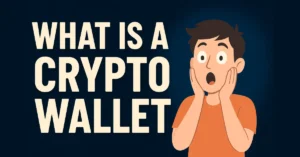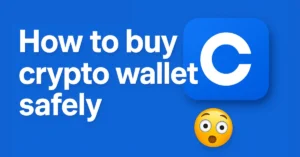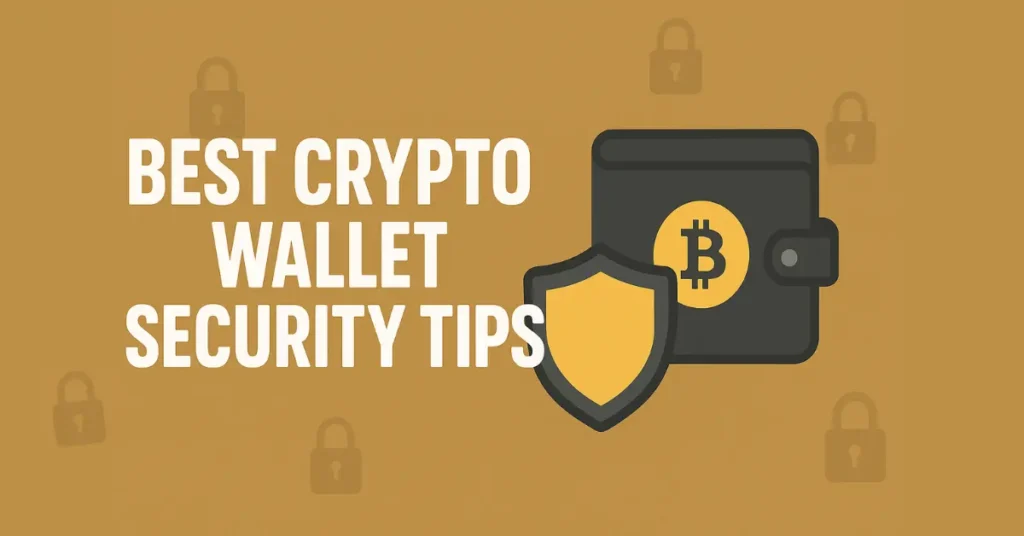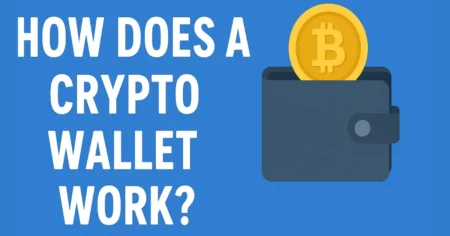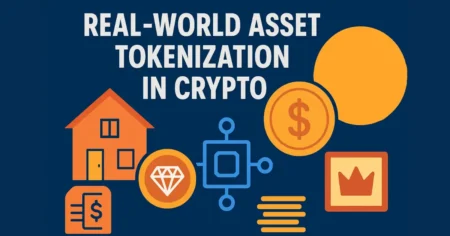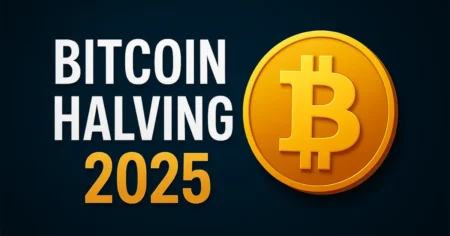Best crypto wallet security tips
Introduction to Crypto Wallet Security
If you’ve invested in cryptocurrency, you’ve probably realized that security is not just a recommendation—it’s a necessity. Unlike money in a traditional bank account, which is insured and often recoverable if stolen, cryptocurrency works differently. Once your coins are stolen, they’re almost impossible to get back. This is why wallet security should be your number one priority when dealing with digital assets.
Think of your crypto wallet as a digital safe. Just like you wouldn’t leave your house keys lying around in public, you can’t afford to leave your crypto keys unprotected. The rise of cybercrime, combined with the increasing popularity of cryptocurrencies in the United States, makes wallet security more critical than ever. Hackers are constantly developing new tricks to steal funds, and users who overlook basic security practices often end up as easy targets.
In this guide, we’ll break down practical, easy-to-follow strategies to protect your wallet. Whether you’re a beginner buying your first Bitcoin or an experienced investor holding multiple coins, you’ll find actionable security tips that can save you from costly mistakes.
Why Crypto Security Matters More Than Ever
The popularity of crypto is booming, but so are scams and hacks. From phishing attacks to exchange hacks, millions of dollars have been lost in recent years. Unlike credit cards, which come with fraud protection, crypto transactions are final—no refunds, no chargebacks. If someone gains access to your wallet, your funds are gone for good.
With major players like the SEC tightening regulations and more Americans entering the crypto market, hackers are targeting U.S. investors in particular. The risks are higher, but the good news is that most losses can be prevented with the right precautions.
Understanding the Risks of Poor Wallet Security
Before diving into tips, let’s make one thing clear: the biggest security threat isn’t always hackers—it’s often user negligence. Common mistakes include reusing passwords, keeping coins on exchanges, or ignoring updates. Just like leaving your front door unlocked invites burglars, sloppy wallet habits invite cybercriminals.
Poor wallet security exposes you to risks like:
- Phishing attacks: Fake emails and websites tricking you into revealing your keys.
- Malware infections: Viruses that secretly steal login details.
- Social engineering: Scammers manipulating you into sending funds voluntarily.
- Lost access: Forgetting seed phrases or private keys without a backup.
- The bottom line: crypto security isn’t just about technology, it’s about discipline.
Types of Crypto Wallets Explained
To secure your funds, you first need to understand the types of wallets available. Not all wallets are created equal, and each comes with its own balance of convenience and security.
Hot Wallets vs. Cold Wallets
A hot wallet is any wallet connected to the internet. Think of mobile apps, desktop wallets, or even exchange wallets. They’re convenient for quick transactions but also more vulnerable to hacks.
A cold wallet, on the other hand, stores your crypto offline. This could be a hardware device or even a paper wallet. Since it’s not connected to the internet, hackers can’t reach it easily. Cold wallets are the safest option for long-term storage, while hot wallets are better for active trading.
Hardware Wallets and Their Benefits
Hardware wallets like Ledger and Trezor are among the most trusted solutions in the crypto community. They’re small, USB-like devices that store your private keys offline. Even if your computer is infected with malware, your hardware wallet adds a strong layer of protection.
The benefits of hardware wallets include:
- Isolation: Private keys never leave the device.
- PIN and passphrase protection: Even if stolen, thieves can’t access your funds without your code.
- Support for multiple assets: Most devices support Bitcoin, Ethereum, and hundreds of other tokens.
While they require an upfront investment (usually $50–$200), the peace of mind they provide is worth far more.
Mobile and Desktop Wallets—Convenience vs. Security
Mobile wallets like Trust Wallet or Coinbase Wallet are popular because they’re easy to use. You can send or receive crypto instantly, check balances, and even connect with decentralized apps (dApps). But convenience comes with risk. If your phone gets hacked or lost, your funds are at risk unless you’ve taken extra precautions.
Desktop wallets, on the other hand, give you more control but require secure devices. If your laptop is infected, so is your wallet. That’s why securing your devices is just as important as securing the wallet itself.
Choosing the Right Wallet for Maximum Security
Now that you know the types, how do you pick the right one? The wallet you choose depends on your goals—are you a long-term holder, or do you trade regularly?
Factors to Consider Before Picking a Wallet
When choosing a wallet, ask yourself:
- How much crypto do I own? Large holdings should be kept in cold wallets.
- How often will I use it? Daily traders might need a mix of hot and cold wallets.
- What assets do I hold? Some wallets support only certain coins.
- How tech-savvy am I? A simple, user-friendly wallet may be better for beginners.
A good rule of thumb: never store more in a hot wallet than you’re willing to lose.
Reputation, Community Trust, and Developer Support
Not all wallets are safe. Some shady wallets are designed specifically to steal your funds. Before downloading, research the wallet:
- Check reviews: What are other users saying?
- Look at the developers: Are they reputable?
Is it open-source? Community-audited wallets are generally safer.
How long has it been around? Established wallets are more trustworthy than new, untested ones.
Multi-Signature Wallets for Extra Protection
A multi-signature (multi-sig) wallet requires more than one private key to authorize a transaction. For example, you could set up a wallet that requires approval from both your phone and your laptop before funds can be sent. This makes it much harder for hackers, since they’d need access to multiple devices at once.
Multi-sig wallets are especially popular among businesses, but individuals can also use them to safeguard large holdings.
Essential Security Practices for Crypto Wallets
Choosing the right wallet is just the beginning. How you manage it makes the biggest difference in your security.
The Importance of Strong and Unique Passwords
Weak passwords are the easiest way to get hacked. Hackers use tools that can guess simple passwords in seconds. That’s why you should always create strong, unique passwords for your wallets and related accounts.
A strong password includes:
At least 12 characters.
- A mix of uppercase, lowercase, numbers, and symbols.
- No personal information like birthdays or pet names.
Using a password manager can help you generate and store complex passwords safely.
Enabling Two-Factor Authentication (2FA)
Two-factor authentication (2FA) adds an extra security layer. Instead of logging in with just a password, you’ll also need a temporary code from an app like Google Authenticator.
Avoid using SMS-based 2FA, since SIM-swapping attacks are becoming more common in the U.S. Always choose app-based authentication or even hardware keys like YubiKey for maximum safety.
Keeping Private Keys Safe and Offline
Your private key is the master key to your wallet. If someone gets it, they get your crypto. That’s why it should never be stored online or in plain text.
Best practices include:
- Writing it down on paper and storing it in a safe.
- Engraving it on a metal plate for durability.
- Never sharing it with anyone, even customer support agents.
Remember: “Not your keys, not your coins.”
Avoiding Common Security Mistakes
Even seasoned investors fall into traps that compromise their security. Let’s cover the most common ones and how to avoid them.
The Danger of Reusing Passwords Across Platforms
Reusing the same password for your wallet, email, and exchange accounts is a recipe for disaster. If one account gets hacked, the others will fall like dominoes. Always create unique passwords for each platform, and use a password manager to keep track.
Risks of Leaving Crypto on Exchanges
Many beginners think exchanges are safe because they’re big companies. But history proves otherwise—Mt. Gox, QuadrigaCX, and even Binance have faced major breaches. Exchanges control the keys, not you. If they’re hacked or go bankrupt, your funds are at risk.
A better approach: only keep the crypto you actively trade on exchanges, and move the rest to your personal wallet.
Phishing Scams and Social Engineering Tactics
Phishing scams are one of the most successful ways hackers steal crypto. Fake websites, emails, or even fake support agents trick you into revealing your private keys.
To avoid phishing:
- Double-check website URLs before logging in.
- Bookmark official wallet and exchange sites.
- Never click suspicious links in emails or messages.
Social engineering takes it a step further—scammers might pretend to be friends, influencers, or company representatives. Always verify identities and remember: no legitimate service will ever ask for your private keys.
Backing Up Your Wallet Properly
Backing up your wallet is just as important as securing it. Imagine spending years building your crypto portfolio, only to lose it because your laptop crashed or your phone was stolen. Unlike traditional bank accounts, there’s no “forgot password” option in crypto. If you don’t back up your wallet, you risk losing access forever.
Seed Phrases—What They Are and Why They Matter
When you set up a crypto wallet, you’re usually given a seed phrase (also called a recovery phrase). This is a series of 12 to 24 words randomly generated by your wallet software. It’s essentially a human-readable version of your private key.
The seed phrase is the single most important piece of information in wallet security. With it, you can restore your wallet on any device, anywhere in the world. But if someone else gets it, they can do the same—and drain your funds instantly.
Never store your seed phrase digitally (like in a text file, email, or screenshot). These can easily be hacked. Instead, write it down on paper or engrave it on a metal backup plate.
Secure Backup Methods (Paper, Metal, Offline Storage)
There are several ways to store your backup securely:
- Paper backup: The simplest method. Write down your seed phrase on paper and store it in a fireproof safe. The downside? Paper can be damaged by fire, water, or just wear and tear.
- Metal backup: A more durable method. Specialized tools let you engrave or stamp your seed phrase on steel or titanium plates. This protects against fire and water damage, making it a favorite among serious investors.
- Offline digital storage: While it’s risky to store your seed phrase digitally, some people use encrypted USB drives or air-gapped devices. If you go this route, make sure the device never connects to the internet.
Common Backup Mistakes to Avoid
Many beginners make avoidable mistakes when backing up their wallets:
- Storing the phrase online: Cloud storage, email, or phone notes are not secure. Hackers know to look there.
- Using only one backup location: What if your house burns down or your safe is stolen? Always create at least two backups in separate secure places.
- Sharing with others: Even trusted friends or family can become a security risk. Keep your seed phrase private unless you’re preparing for inheritance planning.
Backing up correctly takes a bit of effort, but it’s worth it. It ensures your funds are safe even if your devices fail.
Advanced Security Measures
Once you’ve mastered the basics, you can add extra layers of protection. Advanced security isn’t just for wealthy investors—anyone serious about protecting their crypto can benefit.
Using a VPN for Transactions
Every time you make a transaction online, your IP address is exposed. This can reveal your location and activity patterns to hackers. Using a VPN (Virtual Private Network) adds a layer of anonymity and encryption, making it harder for attackers to track you.
Choose a reliable VPN provider that doesn’t log your data. Avoid free VPNs, as they often come with privacy trade-offs.
Setting Up Multi-Signature Approvals
As mentioned earlier, multi-signature wallets require multiple keys to authorize a transaction. For example, you could require approval from your phone and your hardware wallet before funds move.
This means that even if one key is compromised, hackers can’t access your funds without the others. Businesses often use multi-sig setups to prevent a single employee from having complete control, but individuals can benefit too.
Leveraging Cold Storage for Long-Term Holdings
If you plan to hold crypto for years, cold storage is the safest choice. This includes:
- Hardware wallets kept offline except when making transfers.
- Paper wallets generated offline and stored securely.
Air-gapped computers used solely for managing wallets without ever connecting to the internet.
Think of cold storage as putting your crypto in a vault. It’s not meant for daily transactions, but it keeps your long-term savings out of reach from online threats.
Device and Network Security
Even the most secure wallet is only as safe as the device and network it runs on. Hackers often go after weak points like outdated software, infected computers, or insecure Wi-Fi.
Keeping Software and Firmware Updated
Updates aren’t just about new features—they often include critical security patches. If you ignore updates, you’re leaving known vulnerabilities open for attackers.
- Wallet apps: Always use the latest version.
- Hardware wallets: Manufacturers like Ledger and Trezor regularly release firmware updates to fix security flaws.
- Operating systems: Keep your phone and computer updated too.
Yes, updates can be annoying, but they’re a small price to pay for keeping your crypto safe.
Using Secure Networks and Avoiding Public Wi-Fi
Public Wi-Fi is convenient, but it’s also a hacker’s playground. Attackers can intercept your data, redirect you to fake websites, or even inject malware into your device.
If you must make a transaction on the go, use your mobile data or a VPN instead of public Wi-Fi. At home, secure your router with a strong password and encryption.
Anti-Malware and Firewalls for Extra Safety
Your wallet isn’t the only target—your entire device is. Installing anti-malware and firewall software can help catch threats before they reach your wallet.
Some good practices include:
- Running regular malware scans.
- Avoiding downloads from unverified sources.
- Using a separate device dedicated to crypto if possible.
Think of it like this: you wouldn’t leave your safe in a house with broken locks. The same goes for your wallet on an unsecured computer.
Best Practices for Mobile Wallet Security
Mobile wallets are popular in the U.S. because they’re easy to use, but they also come with risks. Since most of us rely on smartphones for daily activities, securing them should be a top priority.
Locking Apps with Biometrics and PINs
Most modern phones allow you to lock specific apps with fingerprints, facial recognition, or PIN codes. Enabling these adds a valuable layer of protection in case your phone is lost or stolen.
Always use a strong screen lock as well. A simple swipe pattern isn’t enough. Opt for a long PIN, password, or biometric lock.
Risks of Downloading Wallet Apps from Unverified Sources
One of the biggest mobile threats is fake wallet apps. Hackers create clones of popular apps and upload them to unofficial app stores. Once installed, these apps steal your private keys.
To stay safe:
- Only download from the official App Store or Google Play.
- Double-check the developer name.
- Follow links from official project websites, not random ads or forums.
- Remote Wipe and Device Recovery Options
If your phone is lost or stolen, being able to wipe it remotely can prevent hackers from accessing your wallet. Both iOS and Android offer remote wipe features, but they must be set up in advance.
It’s also wise to keep your seed phrase backed up separately so you can restore your wallet on a new device quickly if needed.
Recognizing and Avoiding Scams
Scams are everywhere in the crypto world. They’re not always obvious, and even experienced investors have fallen for them. Awareness is your best defense.
Fake Wallet Apps and Malware Risks
As mentioned earlier, fake apps are a growing threat. Malware can also come disguised as harmless downloads—like a game or productivity tool—that secretly steals your wallet data.
Avoid downloading software from untrusted sources, and always verify that you’re installing the genuine wallet app.
Pump-and-Dump and Giveaway Scams
You’ve probably seen social media posts promising free crypto giveaways. “Send us 1 ETH, and we’ll send you 2 ETH back.” These are always scams. No legitimate company gives away money like this.
Similarly, pump-and-dump groups lure investors into buying coins that suddenly spike, only for insiders to sell at the top, leaving others with worthless tokens.
The best defense? If it sounds too good to be true, it probably is.
Double-Check URLs and Smart Contracts
Phishing websites often use URLs that look almost identical to real ones—like coinbáse.com instead of coinbase.com. Always double-check before entering your credentials.
When dealing with smart contracts (for DeFi apps, staking, or NFTs), review the permissions you grant. Malicious contracts can drain your wallet if you approve them without caution.
Long-Term Crypto Storage Strategies
Crypto isn’t always about short-term trading. Many investors in the U.S. buy Bitcoin, Ethereum, or other coins with the intention of holding them for years—sometimes decades. If that’s your plan, long-term storage strategies are absolutely essential.
Diversifying Between Multiple Wallets
The old saying, “Don’t put all your eggs in one basket,” applies perfectly to crypto. If you store all your coins in a single wallet, one security breach could wipe you out completely. Instead, consider spreading your holdings across multiple wallets:
- Hot wallet: Keep a small amount here for daily use.
- Cold wallet: Store the bulk of your long-term assets offline.
- Multi-sig wallet: Use this for shared or high-value funds.
By diversifying, you’re reducing your exposure. If one wallet is compromised, you won’t lose everything.
Creating a Security Plan for Heirs or Beneficiaries
This is something many investors overlook—what happens to your crypto if something happens to you? Unlike a bank account, crypto doesn’t automatically transfer to your family. If they don’t have your seed phrase or access details, your assets could be lost forever.
Consider creating a clear inheritance plan that includes:
- Written instructions on accessing wallets.
- Secure storage of seed phrases in a safe deposit box or legal document vault.
- Trusting a lawyer or executor with partial access in a multi-sig setup.
It may feel uncomfortable, but planning ahead ensures your hard-earned crypto doesn’t vanish when you’re no longer around.
Periodic Wallet Health Checks
Even if you’re storing coins for the long haul, it’s important to check in periodically. Wallet software can change, networks can upgrade, and security threats can evolve.
Set a reminder every few months to:
- Test your backups (can you restore your wallet?).
- Check for updates to your wallet or hardware firmware.
- Review whether your storage methods still make sense.
Think of it as an oil change for your digital safe—you want everything running smoothly before there’s a problem.
Security Tips for Institutional Investors
Institutional investors—like hedge funds, family offices, and corporations—face different challenges when it comes to crypto storage. Their stakes are larger, their attack surface is bigger, and the legal and compliance landscape is stricter in the U.S.
Custodial vs. Non-Custodial Wallet Solutions
Institutions must decide between:
- Custodial solutions: Third-party companies hold the private keys. These services often come with insurance and compliance support, making them appealing for institutions that need to meet regulatory standards. Examples include Coinbase Custody and BitGo.
- Non-custodial solutions: Institutions keep full control of the private keys, often using advanced hardware and multi-sig setups. While this offers maximum independence, it also means more responsibility for security.
Each option has trade-offs, and many institutions use a mix of both.
Importance of Compliance and Insurance
Unlike individual investors, institutions must follow regulations like AML (Anti-Money Laundering) and KYC (Know Your Customer). They also need insurance coverage to reassure clients and protect against catastrophic losses.
In recent years, specialized insurance providers have emerged that cover digital assets against theft and loss. This extra layer of protection gives institutions peace of mind.
Layered Security Approaches
Institutions rarely rely on a single security measure. Instead, they use a layered defense strategy that may include:
- Cold storage vaults with biometric access.
- Multi-sig approvals requiring multiple executives.
- Segmentation of funds across multiple wallets.
- Continuous monitoring and threat detection systems.
This approach ensures that even if one layer fails, others remain intact.
Case Studies: Lessons from Major Crypto Hacks
Sometimes the best way to learn is by studying past mistakes. History has shown us that even the biggest exchanges and wallets can fall victim to attacks. By understanding what went wrong, you can avoid repeating the same errors.
Mt. Gox Hack—What Went Wrong
Back in 2014, Mt. Gox was the world’s largest Bitcoin exchange, handling over 70% of all transactions. Then disaster struck—hackers stole about 850,000 BTC, worth billions today.
What caused this?
- Poor security practices.
- Lack of transparency.
- Over-reliance on hot wallets.
The lesson? Never trust exchanges with long-term storage. Always move funds to your own wallet.
The Binance Incident and Lessons Learned
In 2019, Binance—one of the biggest and most secure exchanges—was hacked for $40 million in Bitcoin. Hackers used phishing, viruses, and API exploits to bypass security systems.
Fortunately, Binance had an insurance fund (SAFU) that covered the losses. But the incident was a reminder that no exchange is 100% safe. Even top platforms can be breached.
How Individuals Can Learn from These Events
Both cases highlight the same truth: relying on centralized platforms puts you at risk. Individual investors should:
- Use exchanges only for trading, not storage.
- Set up strong personal security measures.
Remember that decentralization exists for a reason—you are your own bank.
Staying Updated in an Evolving Threat Landscape
Crypto security is not a one-time task. Hackers are constantly evolving their methods, and staying updated is key to staying safe.
Following Security Experts and Communities
One of the best ways to stay informed is by following crypto security experts on platforms like Twitter, Reddit, or specialized forums. Communities often spot scams and vulnerabilities early, giving you a heads-up before threats spread widely.
Look for reputable voices with proven track records rather than random influencers.
Attending Crypto Security Webinars and Conferences
In the U.S., there are numerous crypto conferences and webinars that cover security topics—events like Consensus, Bitcoin Miami, or DEF CON often feature workshops on protecting wallets. Attending these (even virtually) keeps you ahead of the curve.
Regularly Reviewing Wallet Security Practices
Your security habits should evolve with the industry. Take time every few months to:
- Review whether your password manager is still secure.
- Check for firmware and software updates.
- Reassess whether your storage strategy fits your portfolio size.
By treating wallet security as an ongoing process, you’ll always be better prepared than those who treat it as a “set and forget” task.
Conclusion: Your Crypto Security Checklist
Protecting your crypto wallet isn’t rocket science, but it does require consistency. By combining smart wallet choices, disciplined habits, and ongoing education, you can drastically reduce the risk of losing your assets.
Here’s a quick checklist to recap:
Choose the right wallet type (hardware for long-term, hot wallets for daily use).
- Use strong, unique passwords and 2FA.
- Back up your seed phrase securely and offline.
- Keep your devices updated and free of malware.
- Never store large amounts of crypto on exchanges.
- Watch out for scams, phishing, and fake apps.
- Review your security setup regularly.
Remember, crypto puts you in control—but that control comes with responsibility. Treat your wallet like a vault, and you’ll safeguard not just your money, but your financial independence.
FAQs
What is the safest type of crypto wallet?
Hardware wallets are considered the safest because they keep your private keys offline, making them nearly impossible to hack remotely.
Should I keep my crypto on an exchange?
No. Exchanges are convenient for trading but risky for storage. Always transfer long-term holdings to your personal wallet.
How often should I update my wallet security settings?
At least every few months. Check for software updates, refresh passwords if needed, and review your backup methods.
What’s the best way to store a seed phrase?
Offline methods are best—write it on paper or engrave it on metal. Keep multiple copies in secure, separate locations.
Can I recover my wallet if I lose my private keys?
No. Without your private keys or seed phrase, recovery is impossible. That’s why secure backups are critical.
Also, read
- What is a crypto wallet, and how does it work? – Coinsify
- 10 Crypto Terms Every Beginner Must Know: Coinsify
- What is blockchain technology? Complete Guide – Coinsify
- How to Buy Crypto Safely in 2025: Complete Guide – Coinsify
- Bitcoin vs Ethereum: Key Differences Explained: Complete Guide
- Ultimate Blockchain Glossary: Learn Blockchain Terms Easily
- How to Buy Bitcoin Safely (Complete Beginner’s Guide)
- Top 10 Crypto Wallets for Beginners (2025 Edition)
- What is cryptocurrency? A Beginner-Friendly Guide (2025)
